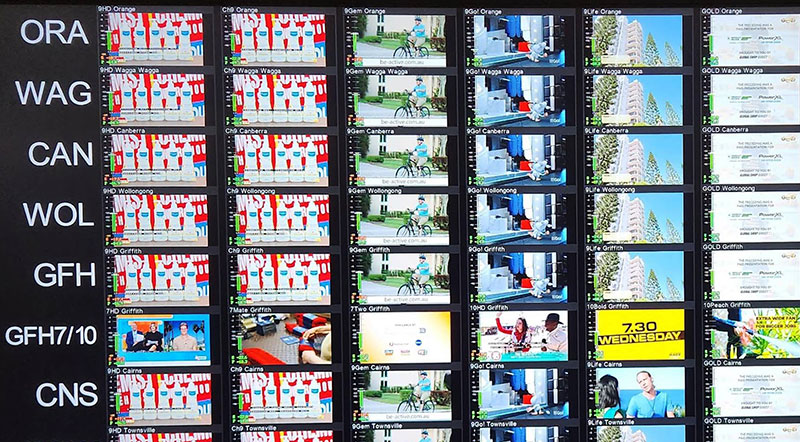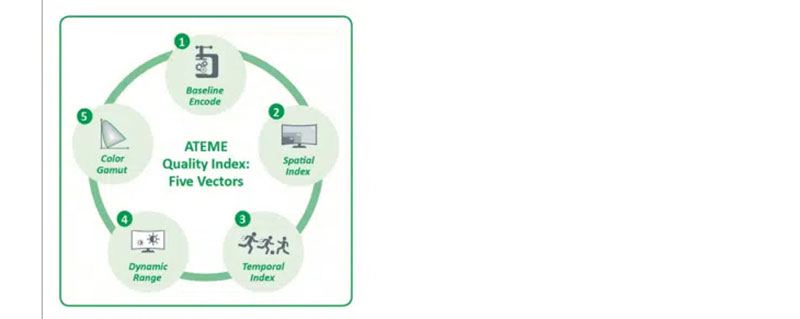WIN TV worked with MediaHub and Ateme on a new encoding system, ready for today’s devices and platforms, and headend-as-a-service for its channels across regional Australia.

Australia’s WIN TV network covers much of regional Australia. Through its television broadcast licences, it re-broadcasts metropolitan network content into regional markets in six states and the ACT. About one year ago, WIN TV realised that its broadcast compression and encoding system had reached its useable lifespan, requiring excessive compute power to function and failing to support the features WIN would need to continue broadcasting over the next few years.
Video encoding is necessary to compress and prepare video files and streams for the formats and specifications required for playback. At the same time, the smaller files put less pressure on storage and bandwidth. Most important, encoding makes sure that WIN TV’s content is consumable across various devices and platforms. Because these are now changing more rapidly, WIN needed to keep its compression and encoding systems up to date.
Outsourced Headend
The network began working with MediaHub Australia on a new encoding system. Chief Digital & Information Officer at Mediahub Simon Scott said, “WIN wanted to outsource its headend functions and was looking for a way to access this functionality as external services instead of a product investment. The requirements were substantial, handling 158 channels of compression, encoding, statistical multiplexing (Statmux) and multiplexing from SMPTE 2022-6 IP source playout streams. They also wanted a fully redundant system in which the backup system is hosted in another datacentre.”
Multiplexing sends multiple signals or streams of information over a communications link at the same time in the form of a single, complex signal. Statistical Multiplexing goes a step further by dynamically allocating bandwidth to each channel on an as-needed basis, and only to channels that are currently transmitting. It packages data from active channels into packets and dynamically feeds them into the output channel, usually first in, first out but it can also allocate extra bandwidth to specific input channels.
TITAN Video Processing
MediaHub partnered with Ateme to build a system meeting WIN’s requirements, based on Ateme TITAN Live and Ateme TITAN Mux software running on standard COTS compute servers. TITAN Live carries out high-density video processing for cable, DTH, DTT, IPTV and OTT live delivery of content up to UHD. On ingesting a channel feed, it simultaneously produces multiple streams in real time, while applying live video compression.

The new headend for WIN TV processes content for all of WIN TV’s stations.
TITAN Live supports the idea of a converged headend because, as pure software, it can be virtualised and allows deployments on and off premises, from a hardware installation, similar to an appliance, to a cloud-native approach. TITAN Mux works as a statistical multiplexer, enhancing video quality by dynamically allocating bit budgets to video streams at every frame, depending on analysis of image complexity.
MediaHub CEO Alan Sweeney said, “We have been using Ateme’s software for a number of years, as the foundation for the Imparja channel and SCA VAST News systems. Since, then we’ve seen their systems advance rapidly to meet the needs of the largest broadcasters in Australia. Ateme and MediaHub work well together, as both organisations continue to extend our services to help clients to manage changing consumer demands.”
Regarding redundancy, the new WIN TV headend uses MediaHub’s FibreHub services to set up connections of over 200Gbps between the main and backup system, across the two datacentres. The FibreHub redundant network supports connectivity services for low latency, high capacity delivery of uncompressed video and data via physically secure datacentres.
Video Quality and Transmission Formats
WIN TV’s GM Television Operations Stevan Djokic talked about the issues of video quality and transmission formats. He said, “When the WIN network transitioned onto its new Ateme headend, we were impressed with the ease with which we have been able to change transmission formats. The industry is pushing hard toward full MPEG-4 with a mix of HD and SD, focussing on running as many channels as possible in HD. So far, we’re happy with the picture output but look forward to seeing even higher image quality in regional Australia by using the new MediaHub Ateme headend to its full capabilities.”
Ateme’s encoding engine aims for bandwidth efficiency that achieves best-possible video quality at lower bitrates for the compression types required in WIN’s regions – H.264 and MPEG-4. It also raises processing density on Intel and AMD processors without compromising video quality. Broadcasters and service providers can host more channels on a single server for cost efficiency and better use of resources.
New methods such as AI-assisted encoding and Statmux (see above) assist in reaching the highest quality in the final encode. ATEME has developed quality indices, tuned against a large database of thousands of quality test encodings applicable across codecs and resolutions. Machine learning techniques were then used to train the algorithms to match the outputs to these visual quality evaluations.
Ateme has an adjustable licensing model that allows WIN to pick and choose the codecs and formats they want as required, which also helps migrate SD services to HD. Simon said, “MediaHub and WIN had performance requirements for the new headend system as well, including low power usage and less hardware, which Ateme has met.”

Ateme’s quality index consists of five independent metrics.
Going to Air
The new system has been on-air for several months with no issues, despite running 24x7 across all of the markets that WIN TV broadcasts into. “We are able to switch directly between main and backup compression systems across datacentres at multiple levels of input, encode and mux with no impact to air, which has simplified testing and maintenance,” Stevan said.
WIN’s 158 Channels are ingested as SMPTE 2022-6 IP streams by Ateme Titan Live and compressed into the various renditions needed for each market as MPEG-4 or H.264. The Dell server/AMD processor combination can encode over 60 channels in a single server CPU for either HD or SD streams.
These compressed streams are then picked up by the Ateme Titan Mux servers that create the various MPTS (multi-program transport streams) for each market, specifying the necessary mix of variable and constant bitrate programs. These are then passed on to the rest of the equipment in the transmission path as MPTS IP (2022-2) streams for delivery by the distribution network to the transmitters around Australia.
Going Forward
Since the system went live, WIN has migrated its WIN 9GEM station from SD to HD with quick, simple software configuration changes performed by MediaHub’s Digital Services Team. Alan Sweeney said, “Ateme’s system gave us an opportunity to lead WIN into a modern physical environment powered by AMD servers and Ateme’s software product line. As a result, the new system is housed in a single IT rack, which is more efficient in terms of space, power and cooling, and cost.”
Taking advantage of their relationships with vendors such as Magna Systems, who handled systems integration, Dell and NVIDIA, as well as Ateme, MediaHub ran the project and delivered the solution within a tight budget and time frame, despite the IT supply chain issues of recent years. Alan said they are confident that the quality and flexibility of the system will enhance the services and upgrades they can offer WIN going forward. www.mediahubaustralia.com.au




